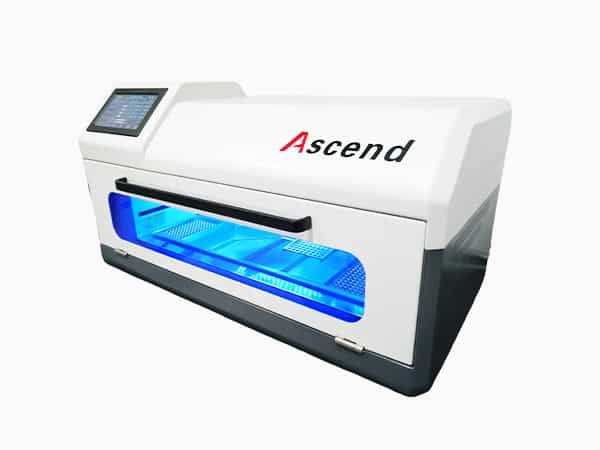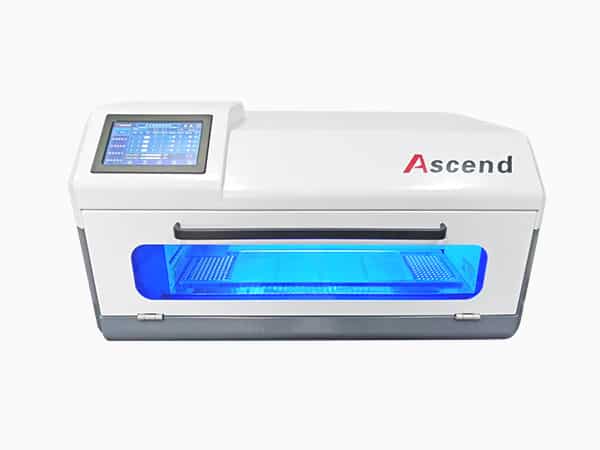Use method and precautions of magnetic bead method nucleic acid extraction system
The nucleic acid extraction system is an instrument that uses matching nucleic acid extraction reagents to automatically complete sample nucleic acid extraction. The magnetic bead method is to lyse the cell tissue sample through the lysis solution, the nucleic acid molecules free from the sample are specifically adsorbed to the surface of the magnetic particles, and the impurities such as proteins are not adsorbed but remain in the solution. The magnetic beads carrying nucleic acid are adsorbed by a magnetic rod and moved to different reagent tanks. The pure nucleic acid is finally obtained by repeated rapid stirring and mixing of the liquid, cell lysis, nucleic acid adsorption, washing and elution and other steps.
Use of magnetic bead nucleic acid extraction system
There are usually two ways to use the magnetic bead method nucleic acid extraction system, namely the magnetic rod method and the suction method. Below we will explain the specific operations of the magnetic rod method and the suction method in detail.

1. Magnetic rod method
The magnetic rod method uses the transfer of magnetic beads and the immobilization of liquids to realize the separation of nucleic acids. The principle and process are the same as the suction method. There is a difference in the separation between magnetic beads and liquid. The magnetic rod method is to separate the magnetic beads from the waste liquid through the adsorption of the magnetic beads on the magnetic rod, and put them in the liquid in the next step to realize the extraction of nucleic acid.
2. Suction method
The suction method is also called the pipetting method, which uses the transfer of liquid or the immobilization of magnetic beads to realize the extraction of nucleic acid. The transfer is usually realized by the operation of the system control manipulator, and the extraction process is as follows:
1) Cracking
Add the lysate to the sample, use mechanical movement and heating to mix the reaction solution and make the reaction complete. Lyse the cell to release the nucleic acid.
2) Adsorption
Add the magnetic beads to the sample lysing solution, mix well, and use the magnetic beads to have a strong affinity for nucleic acids under high salt and low pH values. The magnetic beads can adsorb nucleic acids. Under the action of an external magnetic field, separate the magnetic beads from the solution. Transfer the tip to the waste tank and discard the tip.
3) Washing
Remove the external magnetic field, use a new tip to add the washing buffer, mix well, remove impurities, and remove the liquid under the action of the external magnetic field.
4) Elution
Remove the external magnetic field, add the elution buffer with a new tip, mix thoroughly, and the bound nucleic acid is separated from the magnetic beads, so that the purified nucleic acid is obtained.

Precautions
1. The nucleic acid extraction system is at least 10cm away from other vertical surfaces.
2. The input power cord of the instrument must be grounded to prevent electric shock accidents.
3. The operator is not allowed to disassemble the instrument without authorization, and must have a qualified professional maintenance personnel to complete the replacement of components or perform internal adjustments and other operations. When the power is turned on, do not replace the components.
4. The relative humidity is 10%-80%, the unobstructed air is 35℃ or below, the normal atmospheric pressure (altitude should be lower than 3000m), the temperature 20-35℃, and the typical use temperature 25℃ is the installation environment of the instrument.
5. Do not place the instrument near a heat source such as an electric heater. Avoid splashing water or other liquids into the electronic components to avoid short circuits.
6. Both the air inlet and the air outlet are located at the back of the instrument, and at the same time, prevent dust or fibers from accumulating at the air inlet and keep the air duct unobstructed.
At present, the magnetic bead method nucleic acid extractor is widely used in various fields such as environmental microbial detection, food safety detection, blood transfusion safety, forensic medicine identification, disease control center, clinical disease diagnosis, biological research, and animal husbandry.



